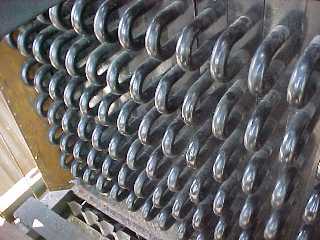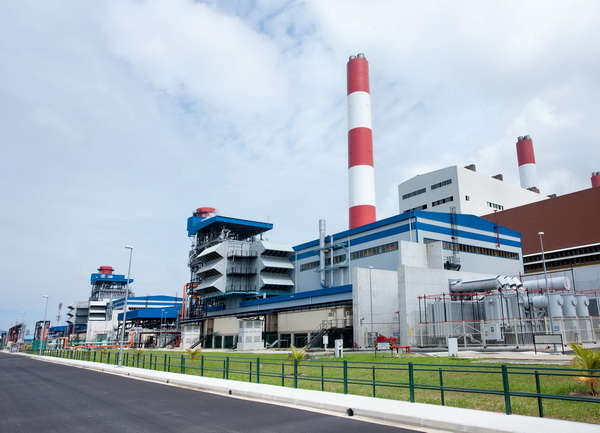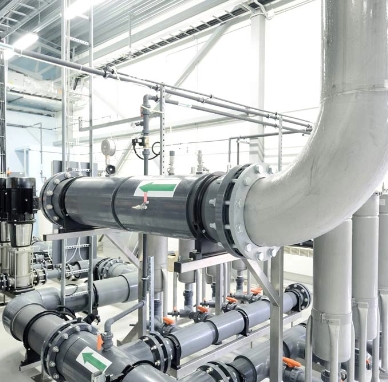Superheaters are revolutionary heating systems that work with several industrial boiler mechanisms. Incorporating a superheater with a boiler system delivers environmentally-conscious and energy-saving results for industrial plants. The design of superheaters can minimize turbine blade erosion and reduce condensation loss in your boiler’s steam pipes.
Read on to learn about a superheater’s purpose as well as about the performance and design advantages of these components.
What is a Superheater in Boiler?
The superheater system enhances the standard boiler with a compact device that relies on a coil-type heat system. The economizer, drum, and heat exchanger work together as an external unit to produce the final steam form. As the boiler generates wet steam, the superheater converts this superheated steam into dry steam.
This apparatus is commonly used in steam turbines to generate electricity and power machinery and rotors. There are two main types of superheaters: radiant and convective. Knowing the differences between these types can help you choose the best superheater for your boiler’s needs.
Purpose of a Superheater in a Boiler
A superheater allows for greater regulation of steam temperature and pressure. Converting wet steam to superheated dry steam is an essential part of heat generation for many machines and processes. A superheater system vaporizes wet steam and converts it into an optimized, hotter form of steam that provides higher-quality heat concentrate.
Radiant Superheaters
Radiant superheaters are placed near the opening of a furnace or heat system. The exposure allows the superheater to convert larger amounts of steam from direct contact. In addition, the increased output from lower fuel generation makes radiant superheaters a low-cost and efficient option.
Convection Superheaters
Convection systems are usually found before the boiler’s economizer in the connective zone of the furnace. Gasses are absorbed through a screen, allowing a filtered compound to reach the generation system of the convective makeup and produce superheated steam. The application produces lower-temperature steam and protects the internal components from high-pressure contact with raw materials.
Advantages of Using a Superheater
A superheater plays a crucial role in overall boiler system operations. These devices can increase a plant’s overall efficiency. Here are some additional advantages of using superheaters in boilers:
- Superheaters can reduce steam consumption.
- Superheaters reduce erosion of steam turbine blades.
- Superheaters increase saturated steam temperature.
- Superheaters improve overall steam generation efficiency.
- Superheater-generated steam controls the flow of moisture and regulates temperature to extend the boiler’s life span.
Traditional boiler designs are effective but often cover a large surface area. Superheaters are compact and designed to optimize a boiler’s performance and deliver cost-effective results. Pipes can limit condensation loss while producing more saturated steam for direct outlets. Thermal fatigue and corrosion decrease when a superheater system is welded in the correct position.
Moreover, the efficiency of superheater boiler systems can be determined prior to application, delivering targeted solutions for your efficiency concerns.
Disadvantages of Superheaters in Boilers
There are relatively few disadvantages to using a superheater in a boiler, and that is largely due to the superheater’s placement abilities. Some standard superheaters are located outside of boilers, often called separately-fired superheaters.
Superheated steam may yield lower heat transfer rates, and these devices require a larger heat transfer surface area. Erosion of turbine blades can occur when the temperature is miscalculated in relation to the superheater design and emission expectations. If this happens, hardware erosion could impact the boiler’s performance. Superheaters require careful maintenance to ensure tube failure does not occur.
However, these issues can be easily remedied when you work with a knowledgeable superheater manufacturer. A skilled superheater manufacturer can design solutions for your plant’s exact needs and work around any maintenance or efficiency concerns.
Superheaters in HRSGs
If you’re considering implementing a superheater for your heat recovery steam generator (HRSG), it’s important to understand the application nuances that exist between superheaters designed for HRSGs and industrial boilers.
In terms of internally-insulated HRSGs, the superheater acts as an additional component of the filtration system and is attached in a manner that supports the original unit’s structural integrity. Design is a crucial consideration when you want to incorporate additional superheater units with HRSGs.
Trust Industrial Boilers America with Your Superheater Needs
The right superheater performance and design specifications can turn low-quality wet steam into high-quality, dry stream. Industrial Boilers America develops targeted superheater solutions that protect equipment integrity and support our environmentally-conscious clients’ overall production and efficiency standards.
Contact our team to learn how our superheater solutions can support your plant.


